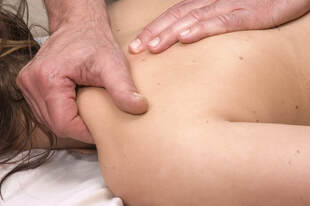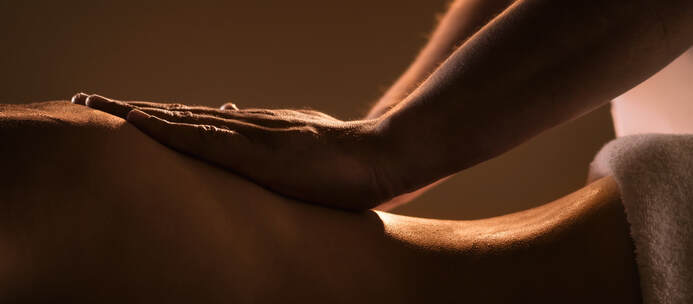Swedish Massage
History
At the tail end the renaissance era, medical practitioners began using massage as part of their healing treatments. Ambroise Pare (1570-1590), the French barber-surgeon and founder of modern surgery classified massage movements as gentle, medium, and vigorous. He is credited with restoring the health of Mary, Queen of Scots by use of regular massage treatments.
In the early 1800's Swedish physiologist and fencing master Per Henrik Ling created what he called "Swedish Remedial Gymnastics". Ling classified the system as passive and active movements which was eventually developed into a science that spread throughout the world. Modern massage therapy is credited to Dr. Mezger of Holland who established the practice of massage as a scientific method for physicians in the remedial treatment of disease. Through his efforts massage therapy became recognized as fundamental to rehabilitation in physical therapy.
In the 1800's throughout Germany, Denmark, Norway and Sweden, therapeutic exercises, baths and massage were recommended my physicians for restoration and the benefit of health promoting the healthy functioning of all bodily systems.
In England in 1884 The Society of Trained Masseuses was formed and by 1920 the society had gained prestige and respect. Later in 1964 the society was registered as the Chartered Society of Physiotherapy.
5 Main Techniques
Compression - Whole palm or heal of hand pressing directly onto muscle tissue.
Effleurage - Hand gliding over usually with long continuous strokes on the back or limbs with varying pressure.
Petrissage - Kneading movements where the skin and muscular tissue are raised and squeezed, rolled or pinched with firm pressure. Heavier pressure is applied toward the heart to aid in blood flow.
Friction - Techniques are employed to separate massed tissue bundles. Moving the more superficial layers of flesh against the deeper tissues for example, direct finger pressure across tissue fibers, wringing and rolling the skin back and forth.
Vibration - A continuous shaking or trembling movement that is soothing and relaxing or invigorating and stimulating depending on the pressure and rate of vibration.
Percussion - Using both hands simultaneously or alternately to tap, slap, cup, hack (like a karate chop) or beat with a closed hand to stimulate and awaken the body and to encourage blood flow.
Jostling & Joint Movements - Jostling is a gentle rocking motion that can be done with firm or a light touch. Joint movements are done while the clients muscles are in a relaxed state as the practitioner rotates, and stretches a limb.
At the tail end the renaissance era, medical practitioners began using massage as part of their healing treatments. Ambroise Pare (1570-1590), the French barber-surgeon and founder of modern surgery classified massage movements as gentle, medium, and vigorous. He is credited with restoring the health of Mary, Queen of Scots by use of regular massage treatments.
In the early 1800's Swedish physiologist and fencing master Per Henrik Ling created what he called "Swedish Remedial Gymnastics". Ling classified the system as passive and active movements which was eventually developed into a science that spread throughout the world. Modern massage therapy is credited to Dr. Mezger of Holland who established the practice of massage as a scientific method for physicians in the remedial treatment of disease. Through his efforts massage therapy became recognized as fundamental to rehabilitation in physical therapy.
In the 1800's throughout Germany, Denmark, Norway and Sweden, therapeutic exercises, baths and massage were recommended my physicians for restoration and the benefit of health promoting the healthy functioning of all bodily systems.
In England in 1884 The Society of Trained Masseuses was formed and by 1920 the society had gained prestige and respect. Later in 1964 the society was registered as the Chartered Society of Physiotherapy.
5 Main Techniques
Compression - Whole palm or heal of hand pressing directly onto muscle tissue.
Effleurage - Hand gliding over usually with long continuous strokes on the back or limbs with varying pressure.
Petrissage - Kneading movements where the skin and muscular tissue are raised and squeezed, rolled or pinched with firm pressure. Heavier pressure is applied toward the heart to aid in blood flow.
Friction - Techniques are employed to separate massed tissue bundles. Moving the more superficial layers of flesh against the deeper tissues for example, direct finger pressure across tissue fibers, wringing and rolling the skin back and forth.
Vibration - A continuous shaking or trembling movement that is soothing and relaxing or invigorating and stimulating depending on the pressure and rate of vibration.
Percussion - Using both hands simultaneously or alternately to tap, slap, cup, hack (like a karate chop) or beat with a closed hand to stimulate and awaken the body and to encourage blood flow.
Jostling & Joint Movements - Jostling is a gentle rocking motion that can be done with firm or a light touch. Joint movements are done while the clients muscles are in a relaxed state as the practitioner rotates, and stretches a limb.

